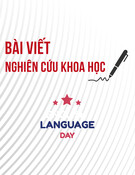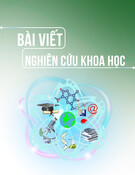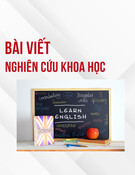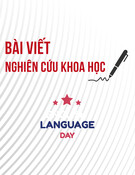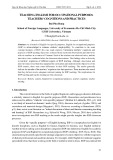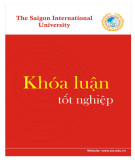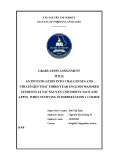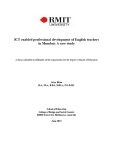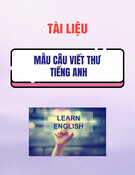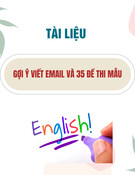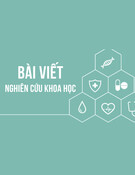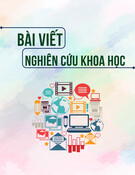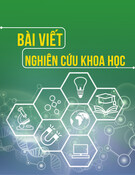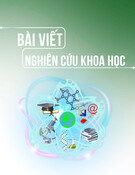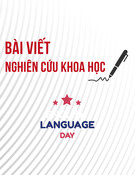
Tuyển tập Hội nghị Khoa học thường niên năm 2024. ISBN: 978-604-82-8175-5
556
COLLABORATIVE LEARNING IN WRITING CLASSES:
BENEFITS AND CHALLENGES
Nguyen Thi Hong Anh
Thuyloi University, email: anhnth@tlu.edu.vn
1. INTRODUCTION
Collaborative learning is considered a
critical skill in the 21st century because of
various benefits this teaching approach can
bring to language learners.
Collaborative writing tasks are defined as
tasks in which learners are required to work
in pairs or small groups to complete a jointly
written text (Swain, 2001). In other words,
collaborative writing offers English teachers
and students opportunities not only to
improve literature review, academic reading
and writing, but also to stimulate reflection,
knowledge sharing, and critical thinking
(Hadjerrouit, 2011). In addition, these tasks
encourage students to utilize a range of social
skills that can help promote accountability,
cooperation, and community (Sukirman,
2016). Furthermore, Foster (1998) observes
that collaborative writing tasks can maximize
students' interaction in the target language.
Other studies also revealed certain
difficulties students encountered while learning
writing collaboratively. Some of these
include increased stress, logistical problems,
target language usage, a conflict with
personal learning style, and issues of fairness
(Sukiman, 2016).
While learning academic writing, English
majored students in Vietnamese universities
often encounter challenges in organization,
grammar, vocabulary, supporting ideas, unity
and coherence (Thao & Quyen, 2020).
Collaborative writing has been introduced as an
effective strategy to make writing lessons more
engaging and to reduce stress for both teachers
and students. The present study aims to explore
collaborative learning at Thuyloi University
and try to answer a research question: “What
are benefits and challenges among English
majored students when they learn writing
collaboratively at Thuyloi University ?”
2.
RESEARCH METHODOLOGY
This study used a quantitative method with a
survey questionnaire carefully adapted from
Abde & Farrah (2015). The survey contained
16 Likert items and was given to English-
major students in two essay writing classes at
Thuyloi University. The teacher of these two
classes employed a collaborative writing
strategy from the beginning to the end of the
course. Her students were divided into groups
of three or four. She assigned tasks, and guided
them through reading, making presentations,
creating outlines, and writing essays. After the
course, 59 students received the questionnaire
via a google link, and 34 responded. The data
was analyzed using Excel software
3. RESULTS AND DISCUSSION
Table 1. Benefits and challenges of
collaborative learning
Items Mean Sd
SD
&D
(%)
N
(%)
A&
SA
(%)
1. Collaborative
writing is an effective
strategy that results in
better, more accurate
and complex essays.
3.88 0.97 8.85 8,85 82.3
2. Collaborative
writing makes the
task more enjoyable
and interesting, and
motivates to write
3.97 1.14 11.9 11.7 76.4



